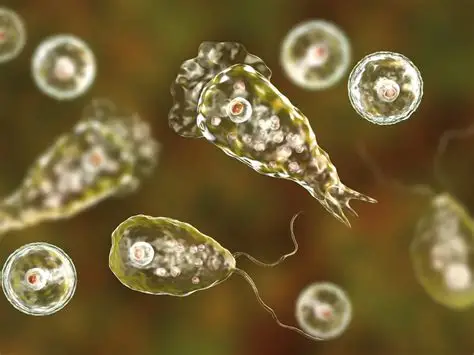A South Carolina family is grieving the devastating loss of 12-year-old Jaysen Carr, who died just two weeks after celebrating the Fourth of July on Lake Murray, one of the state’s most popular recreational spots. The cause of death was a rare and deadly brain infection caused by the microscopic amoeba Naegleria fowleri, which thrives in warm freshwater.
Jaysen’s parents, Clarence and Tiffany Carr, were unaware of the amoeba’s existence until doctors, through tears, delivered the crushing diagnosis an infection called primary amebic meningoencephalitis (PAM), nearly always fatal.
“He had the best Fourth of July of his life,” said Clarence Carr, holding back tears. “We had no idea this danger was even there.”
From Celebration to Tragedy
The Carr family had been invited by friends to spend the holiday weekend boating, swimming, and tubing on Lake Murray, located just 15 miles west of Columbia. Jaysen, an athletic and musically gifted seventh-grader who played football, baseball, and several instruments, spent hours enjoying the water.
Days later, Jaysen began experiencing a headache, which quickly worsened. Soon, he was vomiting, disoriented, and increasingly lethargic. Despite medical intervention, the amoeba had already reached his brain, entering through his nasal passages likely during one of his water jumps and causing fatal swelling and tissue destruction. He died on July 18, after a week-long battle.
The infection is extremely rare, with only 167 known cases in the U.S. between 1962 and 2024, and a survival rate of less than 5%, according to the Centers for Disease Control and Prevention (CDC).
No Public Warning or Testing Required
The Carrs say they were shocked to discover that South Carolina, like most states, does not mandate public reporting of amoeba infections or deaths. There was no testing of the water after Jaysen’s diagnosis and the lake remained open to the public.
“I can’t believe we don’t have our son,” said Clarence Carr. “And I’m terrified it will happen to someone else. Families out there are still swimming without any warning.”
South Carolina’s Department of Environmental Services stated that there is no scientific threshold for “safe” levels of the amoeba in water and that routine testing is impractical. The amoeba is known to exist in warm water typically above 77°F (25°C) and thrives in sediment at the bottom of lakes, rivers, and hot springs.
A Hidden Danger
Experts emphasize that Naegleria fowleri cannot be transmitted from person to person, and that its presence in one body of water does not raise the risk of infection for others. However, boys are statistically more affected, possibly due to water activity patterns like diving and jumping.
Precautions include keeping the head above water, using nose clips, and avoiding forceful water entry into the nose. Doctors also recommend using sterile water for nasal rinsing practices.
A Call for Awareness
The Carrs have chosen to speak publicly about their son’s death to raise awareness and push for improved safety regulations.
“There are families out there right now enjoying the lake,” said Clarence Carr. “They don’t know that it could be the last time. Just like it was for our son.”
A Promising but Unproven Treatment
In recent years, the CDC has initiated a pilot program offering European-approved antibiotics that have shown promise in laboratory conditions. However, PAM remains nearly impossible to treat once symptoms appear.
Jaysen’s death marks the first known amoeba-related fatality in South Carolina since 2016.


